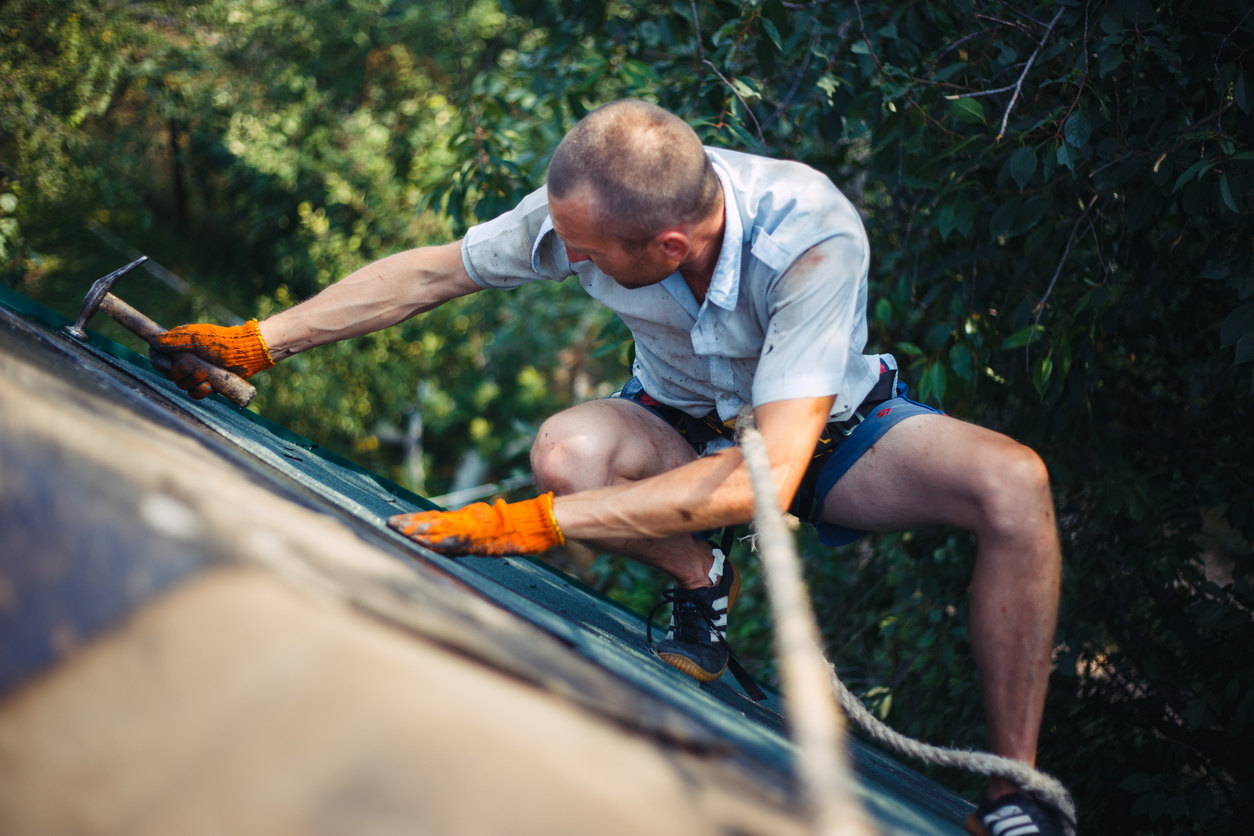
Roof inspection checklist
We’ve prepared a roof inspection checklist to help you ensure your roof is in good working order, which you can download here, but we’d also like to give you some advice about how to go through it.
First, you’ll need to get up into your attic to check that no beams or supports are cracked, bent or otherwise damaged. You should also keep an eye out for any patches of damp that may indicate a leak.
Next, At the first major thaw, do a walk around of the exterior of your home, looking for patches of damp under the eaves. Also, check that water is flowing freely from your drain pipes. If the snow on your roof is melting, but water isn’t coming out the drain spout, you’ve got a blockage in guttering somewhere, and that’s something you don’t want.

Do a visual inspection of your roof
Finally, as soon as your roof is free of snow, dried out, and the weather permits it, get up on it and do a visual inspection. This is of course if it is safe to do so.
Now that winter is finally drawing to a close, and the mercury is slowly climbing back up the thermometer to comfortable levels, it’s time for homeowners to turn their minds to essential maintenance and repairs around the house. There is nothing more essential to the integrity of your home than your roof, so this should be your priority.

Check for winter damages on the roof
Winter is the season that can cause the most damage to the structural integrity of your home, and these negative effects are concentrated on the roof. There are three major threats brought about by winter weather, and they include:
- Snow
Heavy snow can add up to 20 pounds of weight per cubic foot, and this can increase to 50 pounds per cubic foot if it thaws then refreezes. That kind of extra weight can damage not just your shingles but the actual structural support for your roof. Those damaged shingles can lead to very serious problems.

- Freeze and thaw cycles
Particularly during early and late spring, snow and ice that collects and forms during the night can partially melt out during the day and then refreeze the following night. This can have disastrous consequences for your roof, as well as your guttering, as water seeps into small cracks and spaces during the day and then expands as it freezes again at night, turning a minor crack into a major leak. Read more about ice damming here.
- Thermal shock
Modern roofing materials are manufactured to withstand extremes, but even so, they’ll take a beating when subject to the dramatic changes of temperature that can occur during winter. If your roofing structure contains metallic elements or your roof membrane is more than 15 years old, this should be of particular concern to you.
Following this Roof Checklist for Spring and our advice will ensure you spot any problems, major or minor, and can have them dealt with before you need a complete home roof replacement. If you do find any evidence of damage, contact us at Ridgecon Roofing Contractors for a roof estimate for repairs before attempting to tackle it yourself. It probably won’t be as expensive as you think and keep in mind that roofing work presents serious risks even to the most skilled DIYers. Having the job done by professionals is the best way to ensure the comfort of your family and your own personal safety.